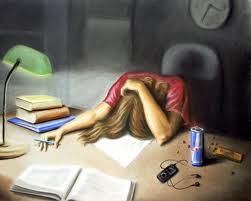The 10 Minute Law School Workout
One of the few things Law School students have is free time. If by chance time does happen to free up during the day or evening, it will most likely be spent filled with extra studying or re-fueling with that third cup of 1000 calorie Mocha Latte Frappacino Coolata (made that up, but might actually exist!) from Starbucks . Either way, that hour just got filled up with extra stress or a sugar high that a 1st grader on Halloween Night couldn’t recover from. While both options may seem good at the time, energy, focus, drive and concentration will suffer. This issue hits very close to home as I am currently supporting my girlfriend as she pursues her Law degree. When I say “supporting” I don’t necessarily mean monetarily, but more in the realm of helping her keep her sanity!
My girlfriend loves to exercise, but like most of us with little free time, working out often gets pushed to the back burner and soon forgotten entirely. When we encountered this problem we assumed it would be easily rectified by budgeting time towards going to the university gym or using her apartment complex’s gym. When even this got too difficult, we had to think of other options. Since time was of the essence, we had to think of a way to fit in a good workout with utmost convenience. In other words, no traveling to gyms, no long bouts of boring cardio and no expensive pieces of equipment. What then are my options you might ask??….well, about 10sq/ft, a countdown timer app on your Iphone, a TRX Strap, some dumbells, and most importantly your body.
The 10 Minute Law School Workout goes like this:
Set your timer to countdown from 10 minutes. You are much more likely to complete a good hard workout if your tell yourself for the next 10 minutes I am going to exercise. The time itself is small enough to deter your own laziness, as even 10 minutes of doing anything can’t be that bad. By setting a time you have now also taken away any ambiguity as to how long you will exercise. You have a set goal, and an attainable one at that.
Next, you are going to select 4 exercises from 4 different categories of exercise. For instance, category 1 will be pushing or pressing exercises. This may include pushups, dumbell overhead pressses, or band presses. category 2 will be a leg exercise such as lunges, squats, dumbbell swings, or single leg squats. category 3 is a pulling exercise. This of course is any exercise that you pull either your own body weight or some form of resistance. Examples are TRX recline rows, bent over dumbell rows, or pullups. The 4th category is a core exercise like a plank, side plank, glute bridge or stability ball rollout. The exercises in each category stress or challenge a different form of human functional movement. By doing all 4 in a workout, you get a good balanced routine that will reduce the likelihood of injury during future workouts and more importantly might help to counteract all those hours of sitting on your rear in the library.
Here are the rules: Complete 10 repetitions of each exercise (excluding the core exercise) before moving on to the next. Use a timed rep for the core exercise like 30 seconds. Rest whenever you need it, but fight the urge to look at your timer. Your goal should be to complete atleast 4 total sets of each exercise. I can promise you, at the end of 10 minutes you will be sweating. You will notice that your heart rate has jumped even higher than what it probably gets to when you do your hamster wheel cardio on the elliptical.
While I am sure you know all of the physiological benefits of exercise, what you may not know so much about, is how it affects your concentration, focus and mental acuity immediately after. The mind and body are not separate entities. Exercise releases dopamine, serotonin, and norepinephine. These neurotransmitters help to control thoughts and emotion. Toxic levels of stress can erode signal pathways in the brain and depression can actually shrink certain areas of the brain. Exercise helps to release chemicals that can reverse this process and develope the brain much like muscles develope after working out. When we move and contract our muscles, proteins are released into the blood stream and make there way to the brain to influence our highest thought processes and improve out cognitive function. John J Ratey talks about this and much more in his book Spark – The Revolutionary New Science of Exercise and The Brain.
So, next time you are thinking about waking up an hour early to study before that test, you may want to also include this 10 minute workout blast to jumpstart your concentration levels. It sure beats the perk of that Mocha Latte Frappacino Coolata 🙂
